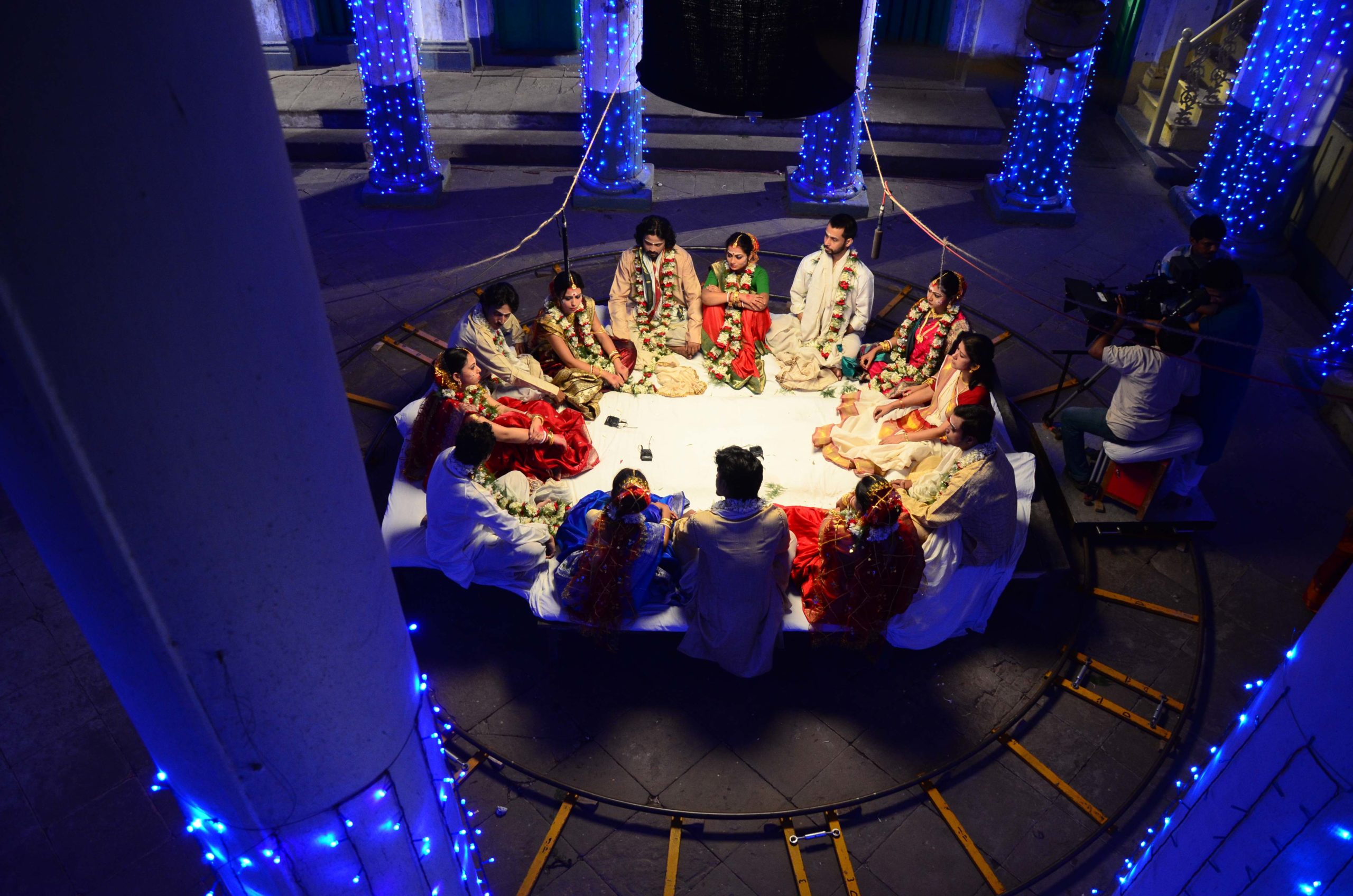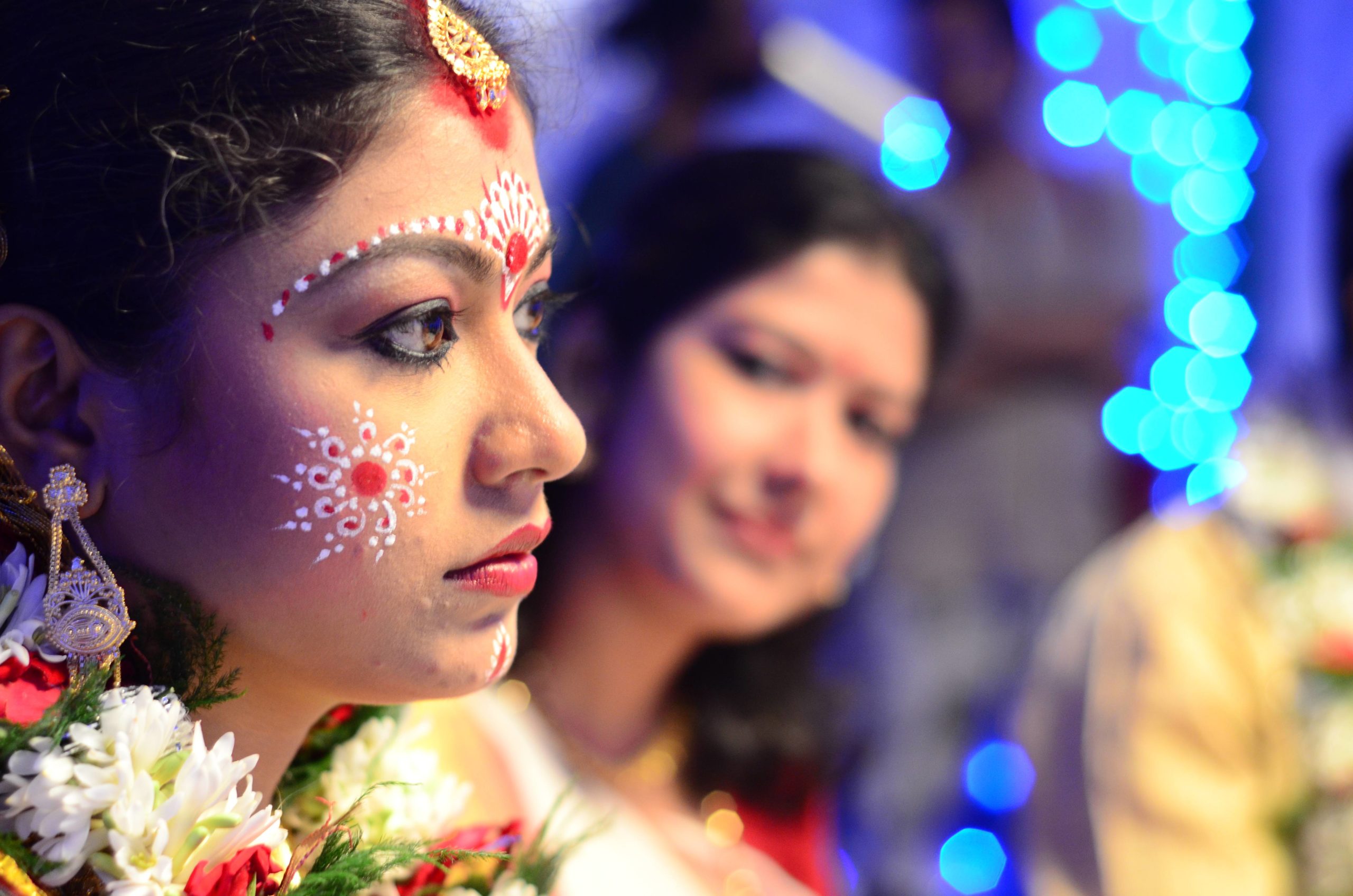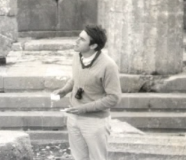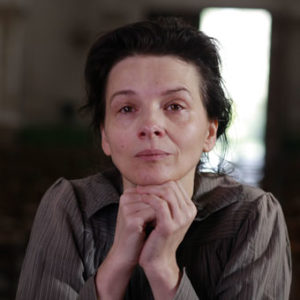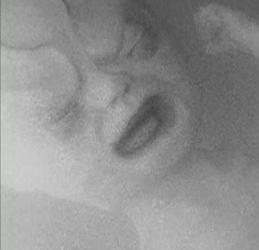Ashish Avikunthak, 2014 (V.O.)
Rati Chakravyuh
Rati Chakravyuh is a single-shot, one-hundred-and-two-minute film about thirteen people (a priestess and six newlywed couples) having their last conversation before committing mass-suicide.
Although the film resonates with many of the issues discussed in my previous interview with director Ashish Avikunthak (b. 1972), I felt that Rati Chakravyuh could offer the occasion for digging deeper into the unique filmmaking practice of a cultural anthropologist teaching Film & Media in the United States and producing films in India[11][11] Three trailers are visible here..
Débordements : You always insist on your films being far removed from the marketplace and the capitalistic exploitation system, so first of all I think it would be interesting to hear about how you managed to finance your latest feature film Rati Chakravyuh…
Ashish Avikunthak : The majority of the funding for this film came as usual with my own finances. However, a German independent film production company based in Berlin funded part of the post-production of the film. This co-producer came in with no-strings attached finances. I had a brief meeting with her during Locarno Film Festival in 2011. In a series of e-mails in 2012 she decided to support Rati Chakravyuh with a modest amount of money to finish the post-production. She wanted to assist my work in good faith. I was not responsible to recover the money back. So for me this was a respectable opportunity.
I still think of my films far removed from the capitalistic exploitation system and the marketplace. Here I would like to make a difference between a market economy and a market society – a distinction made by political philosopher Michael Sandel. He argues that with the rise of capitalism in late 19th century the idea of the “market economy” grew. A market economy is a tool; it’s a valuable and effective tool for organizing productive activity. However, by late 20th century, there was an insidious takeover by the market and now we have a “market society”. A market society is different. A market society is a place; it’s a way of life where market relations, market incentives and market values come to dominate all aspects of life. It’s a society where just about everything is up for sale. For me both the market economy and the market society are problematic social relationships of negotiation. However, between the two, I would choose market economy as a lesser evil.
In this context, I look at this co-production possibility within the larger logic of my own production philosophy. I teach in an American state university and produce films in India, I am very much part of an academic market economy but still removed from a market society structure. Within this analogous logic, I would want to believe that this form of co-production does not compromise my cinematic, cultural or political vision. For me this was a profound gesture of support and belief in my ideological position as a film artist.
D. : In the discussion we had in 2013, you highlighted the importance of “scriptlessness” in your filmmaking practice: “Almost all my films are made in this way – scriptlessness is an intuitive form of practice. There are some ideas but there is no definite script, and then you start painting with film, letting the idea, the location, the actor’s energy, the crew’s mood affect your next strategy. So it’s a very spontaneous film practice, it’s not planned in any sense…“. With Rati Chakravyuh you seem to have changed your strategy a bit in that you wrote, if not a screenplay, at least the dialogues. How did you proceed in the writing work?
A.A.: Rati Chakravyuh is very different from anything that I have attempted before. It is virtually a scriptless film, there was no script in the traditional sense. The dialogues were written in a couple of weeks, in February 2011, in almost a deluge of words that poured out in the middle of nights. It was a stream-of-consciousness outburst. I started writing with Leonardo da Vinci’s The Last Supper and cult-suicides at the back of my mind. The question was: “What would be the nature of the last conversation between a bunch of people who know that they will kill themselves?”. This is the ultimate existential scenario for me. Here death is voluntary and fearless.
With this basic idea, I started to write: I let my mind meander in any direction it liked and, by the end of this process, I had nearly 200 pages of dialogues. Then, I did some editing and sent the dialogues to my collaborator Sougata Mukherjee in Calcutta. We did some more editing and, finally, the dialogues were given to the actors. We gave the actors a month to memorize their lines and then we rehearsed for six weeks. We shot the film in two days.
In Rati Chakravyuh, the moment of spontaneity and unplanned-ness was the moment when I was writing the dialogues and the moment when we were shooting the film. The dialogues in this film were set in stone and no-deviation was allowed, however there was space for improvisation in the form acting and gestures. During the six weeks of rehearsals I spent time working with each actor and configuring the larger performative structure of the film. Intonation of the dialogues, the stoic nature of the acting, the controlled nature of gestural interplay were worked out during the rehearsals.
D. : You have used the expression “stream of consciousness”. Was James Joyce an influence when you were writing?
A.A. : No, Joyce did not influence me, although Joyce and Virginia Woolf are authors that I have read very closely. For me, the process of writing Rati Chakravyuh was a practice of excavating through my conscious and subconscious memory structure. Most of the stories in the film emerge from my own biographical history. I let them come over and then I played with a certain structural form: that is how the writing of the film occurred.
D. : Rati Chakravyuh is a single-shot, unedited film. However, you did some editing work on the dialogues you wrote. Can you tell me about that?
A.A. : I did not want Rati Chakravyuh to be a long or an infinite film, so I did some editing on the text. During the editing, I allowed my intuition to guide me, so it is difficult to give rational explanations: it was a very organic process…
There was nothing wrong with the texts I discarded. As a matter of fact, some of them made their way into the films I am working on now. For example, I have just finished shooting a new feature film, which is based on a dialogical narrative I originally wrote for Rati Chakravyuh. Now I am also in the process of writing another film based on some texts that I had not used in Rati Chakravyuh.
While working on Rati Chakravyuh, it was important for me that one story flows into another. In a sense, in the womb of one narrative was the kernel of another: during the editing process, a seamlessness narrative was sutured. Then, as I told you, the final English text was sent to my collaborator, Sougata Mukherjee, who translated it in Bengali, adding his interpretative view. This way, a pretty cohesive dialogical narrative emerged. When we started rehearsing, we finally removed some more lines here and there. Basically, this final edit was done in order to control the duration of the film, which I wanted to be around 90 to 100 minutes.
D. : So you originally wrote the dialogues in English…
A.A. : I did write the dialogues in English. This is the most unfortunate part of my biography. I am a classical postcolonial subject. My affective universe is vernacular (Hindi and Bengali), but my articulate universe (especially when I write) is English. I am most painfully aware of this schizophrenic duality of my existence. And this is a common duality, one that innumerable of us experience, especially those who belong to a certain cosmopolitan, urban, middle-class Indian milieu.
English was the first language that I learned, when I was sent to an English-medium kindergarten school in Calcutta. My schizophrenic duality was further strengthened in the high school where I studied for nearly ten years: it was a Salesian school (Don Bosco), where students were often fined for speaking in vernacular languages. In a certain sense, you can say that the school I went to cultivated a sense of abhorrence for my own native language. This emerged from a colonial condensation for native people’s language, which has been best articulated by Lord Thomas Babington Macaulay’s Minute on Indian Education, in which he famously opined: “I believe, no exaggeration, to say that all the historical information which has been collected from all the books written in the Sanskrit language is less valuable than what may be found in the most paltry abridgments used at preparatory schools in England”.
This frame of mind gave birth to a conscious statist policy in colonial India, a policy of obliterating native languages through their premeditated substitution with English. Especially after World War Two, English not only became the language of the victorious regime, but it also increasingly became the language of the global marketplace. This has had a significant impact in postcolonial India. With English becoming the language of computational capital (Internet, digital media universe, outsourcing, etcetera), postcolonial India not only wants to be part of the victorious part of the global world, but also of the deepest parts of the capital.
I am a product of such ecology of capitalistic education, so I have to write in English. The way I try to subvert this hegemonic subjectivity of my own biography is to consciously produce work in the vernacular languages that I have origin in – Hindi and Bengali. Therefore, for me, the strategy is to write in English, as it is an inevitable part of my articulative subjectivity, and then to translate what I write into Hindi or Bengali in order to make the dialogues in alignment with my affective subjectivity.
D. : Your film was written in English and it just had its premiere in the United States (October 22nd-November 1st, Aicon Gallery, New York), but it has no English title. Let’s try and do the reverse of your writing process… How would you translate the title “Rati Chakravyuh” in English?
A.A. : For me there is only one title of the film: “Rati Chakravyuh”. Any translation – let’s say in English, German or French – would never match the original. However, let’s try.
The etymology of the word “Rati” in Sanskrit would allude to love, pleasure and enjoyment. Rati is the Goddess of Love, the consort of the God of Love – Kamadeva.
The word “Chakravyuh”, on the other hand, alludes to a very specific spiral military formation mentioned in the Indian epic Mahabharata. The story goes that on the thirteenth day of the war, Abhimanyu, the son of the great warrior Arjuna, penetrates this spiral military formation, but is unable to come out and therefore is tragically killed.
That’s it. I will leave it to you to decide what “Rati Chakravyuh” would mean. It is very difficult for me to translate it into English, so I kept the title as it is. Fundamentally, the title ascribes a meaning of infinite temporal continuity, as if time does not stop. And within it, the circles of life and time move rapidly, forever.
D. : The English text spoken by the actors is really amazing : why did you choose to make a film based on it, instead of staging a theater play or publish it in book-form?
A.A. : Rati Chakravyuh is not a piece of theater or literature. It can exist as any of these, but it is not. This is a cinematic work. This is a work about temporality. The narratives are just an excuse to explore time through cinema. I have been exploring the viscerality of temporality in cinema since I began making films. I think of cinema as the only means of representation that can explore the sinews of time. It is the only form of representation that can provide the experience of time. This has been important to me since I began making films, and with Rati Chakravyuh I am trying to take it to an extreme.
Rati Chakravyuh is not a film like Alexander Sokurov’s Russian Ark, which I consider more a historical spectacle than an exploration of time. History destroys the experience of time. In my film I am very interested in producing the experience of temporality. Here I would like to make a distinction between temporality and durationality. Durationality is physical experience of time, as in Andy Warhol’s Empire or Sleep, for example. Temporality, on the other hand, is a metaphysical experience of time, one that can be achieved through a montage-based film too, it does not have to be single shot. In Rati Chakravyuh, I combine the visceral experience of a single shot with the metaphorical narrative in order to produce a metaphysical resonance. The narratives, which definitely can be read as a piece of literature, bring about this resonance when placed in a cinematic context.
D. : The experience of temporality provided by Rati Chakravyuh is inextricably connected to the experience of camera movement. This is indeed something you have been working on since the short movies collected in the anthology Et Cetera (1997). As in your early film Circumcision, in Rati Chakravyuh the movement takes the shape of a circle: it all revolves around the circle, literally…
A.A. : Yes, it is through the circular motion that the spiral is created. The cinematic experience of Rati Chakravyuh is produced within a circle that produces spirals.
The actual production of the film is made possible with a circular track dolly over which the camera goes around 56 times in 102 minutes. It is a dolly of 16 feet diameter within which the actors sit. In Hinduism and Buddhism the practice of circumambulation is an important part of ritual involved in a temple visit. Here the devotee circumambulates around the deity, or sacred spatiality (a temple or even a sacred city). In Rati Chakravyuh this circumambulatory structure becomes the core of the cinematic experience. The ontology of the film experience is its circumambulatory motion and the epistemology of the film is its dialogical narrative. It is the combination of the two that produces the metaphysical spiral mentioned in the title.
To put in another way, the temporality of the film (single shot, 102 minutes) is affected by the epistemology of the dialogues (multi-narrative aurality) and by the ontology of the camera movement (circular dolly shot which makes 56 circumambulation) to create a metaphysical resonance.
D. : As for your idea of “letting the location affect your next strategy”, why did you choose to shoot in Latu Babu Chatu-Babu temple in north Calcutta?
A.A. : As Rati Chakravyuh is based on my conscious and subconscious memory, I wanted to shoot the film in my city, Calcutta, and that was sacred to me.
I was very keen to shoot the film in what in Bengal is called “Durga Dallan”, a large temple-courtyard situated inside a domestic house, mostly in palatial palaces that emerged in Bengal during the 18th century. Newly minted Zamindars (landlords) under the British East India Company made these larger houses, and housed within it was this sacred domestic spatiality. The sacred temple space inside a domestic habitation is a peculiar architectural formation that emerged in north India during the end of the Mughal rule. Some of the earliest of such temple-domestic space can be seen in north Indian temple towns of Mathura and Vrindavan. Although there is a history of sacred space existing in a domestic architectural formation in the Indian archaeological record, “Durga Dallan” saw a proliferation in north India around the end of the regime of the Mughal emperor Aurangzeb in the late 17th century. Calcutta has vestiges of innumerable such “Durga Dallan”, especially in the older parts of north Calcutta, built mostly in the 18th and 19th century. The major usage of these “Durga Dallan” was to host seasonal worship of mother goddess in its varying forms, the most popular being the Goddess Durga and Kali.
During the reconnaissance for locations, I saw a number of these sites. I chose Latu Babu Chatu-Babu’s house especially because the energy at that location intuitively resonated with me. It was a “Durga Dallan” located in the palatial house of the Ishwar Ram Dulal Deb, where the worship of the Durga started in 1770 and continues to this very day. It is difficult to articulate what was the nature of that resonance, but it seemed to be exactly the location I wanted. I was looking for energy and this space reverberated with the energy I was seeking. And during the shoot, the effect of this energy resonated with everyone working on the film.
D. : I am curious about one line of dialogue from the film: “[Tell] a story with a beginning, a middle and an end. But not necessarily in that order”. Is it a reference to Jean-Luc Godard’s saying “A story should have a beginning, a middle and an end, but not necessarily in that order…”?
A.A. : Yes, that is a conscious reference to Godard. For me a story is a narrative and a narrative can be anything, even a fragment. Within the history of narrative film, the hegemony of the 19th century novelistic tradition is very powerful : the development of a plot, characterization and linear narrative structure that emerged with the rise of the novel has had a firm control over cinematic representation, too. I think that Godard – along with Bresson and more closely in India with filmmakers like Mani Kaul, Kumar Shahani and Kamal Swaroop – consciously questioned the hegemony of novelistic tradition and gracefully broke it. I think of myself as an experimental film artist (I am using the word “experimental” with caution, as I have huge problems with this terminology, which has a Euro-American art historic genealogy and is not comprehensive enough to signal my body of work or the genealogy that I emerge from) with a deep commitment to narrative. But I want to move away from the 19th century narrative structure. In this context, I find Godard’s words and larger body of work inventive. Narratively I am interested in fragments: epic as fragments, fragments as incomplete epics. As another character in Rati Chakravyuh remarks after the lines you quoted: “A story without a beginning / A story without a middle and an end / A story that begins but does not end / A story with an end but no beginning / A story with just the middle”.
D. : Another line of dialogue caught my attention. One of the characters wants to tell “a story that does not make meaning”. Can you elaborate on this concept ?
A.A. : Meaning making is a project of self-consciousness and, especially in the modernistic context, it has a hegemonic value. We have to make meaning of everything that exists. With the rise of modern science, the “mysterious” cannot be allowed to exist. Everything has to be bounded within rationality – a rationality that explains the events and their occurrences, causes and effects. Nothing is allowed not to have meaning : from the depths of molecular structure to the vastness (both temporal and spatial) of the black hole. Similarly, every story we tell has to have a meaning. For me, this is something deeply troubling. The coming of an all-knowing modern humanoid civilization – a civilization that has devised a rational structure to explain everything – is profoundly unsettling. For me, from a political point of view, this kind of civilization produces a fundamentalist way of being. In this rational structure anything that cannot be explained has no value. Modernity is producing a civilization that has an answer for everything : it is a society of unchallenged universal truths. This is problematic for me.
I am interested in a world in which everything does not have an answer. There are things that cannot be explained, so I am deeply committed to a story that does not have any meaning. It exists and its existence cannot be explained : this is what I mean by a story that does not make meaning. I am interested in a universe in which there are mysteries, ambiguities, ambivalences, unknown and undetermined things. It allows for a world that is not hegemonic. Meaning making is a hegemonic act, I want to disallow that.
D. : Back to the issue of India’s colonial roots, one of the topics that the characters discuss in Rati Chakravyuh is cricket. In your film, the seemingly innocuous sport turns into something dark and creepy. Is cricket another instrument England used to impose its cultural dominion on the colonies?
A.A. : Cricket in contemporary South Asia has nothing to do with England now. It has outgrown its colonial roots. Today, in India, cricket is entertainment. Since the early 2000 cricket has being corporatized. It no longer has the vitality of a sport with its honorable codes, courageous grace, charming elegance and affirming conduct. It has become crass entertainment – money making mass popular enterprises. It is no more a game, but a form of gladiatorial orgy in which speculative fortunes are made or busted. It is circus. It is a national past time. In this process, it became dark and disturbing. A sport of colonial lineage, in its postcolonial avatar, is a part of illegal speculative capital – betting and gambling. For me, cricket is a metaphor of corruption of popular culture in contemporary India. I think a similar trajectory has transformed commercial popular cinema in India, either it is the Hindi language Bollywood films or the various popular cinema in vernacular regional languages.
D. : Can you give me some details about the relationship between cricket and nationalistic feelings (the match between India and foreign teams discussed in the film)?
A.A. : Books can be written on cricket and nationalism in South Asia, and here I will not even try to explain that connection. In my film, it is Pakistan that India is at war with (in 1965 and 1971), and it is Pakistan with which India is playing a cricket match. Here I merge the memory of the war and the memory of cricket matches into one reality. India-Pakistan matches are often played as proxy wars. The tension between the two nations is so palpable that a cricket match is almost a war, and a war is almost like a cricket match.
In Rati Chakravyuh there is also reference to West Indies, which was the most formidable cricketing team in the 1970s-1980s : India suffered numerous humiliating defeats against them. It is the memory of India vs. Pakistan and India vs. West Indies cricket matches, together with the war between India and Pakistan in December 1971, that led to the making of the state Bangladesh that is mentioned in the film.
D. : Talking about popular culture, in Rati Chakravyuh the characters tell many stories about the Gods of yesterday and the idols of today: we hear the story of the monkey God Hanuman (son of Marut) turning into a Maruti, a Suzuki car manufactured in India; we hear the story of the lavish funerals of Uttam Kumar, the Bengali cinema star… In your opinion, is Indian culture becoming more and more secular?
A.A. : In Rati Chakravyuh, I am creating a world in which the dichotomy between secular and religion does not exist. The schism between truth and falsehood does not exist. The chasm between tradition and modernity does not exist. I am constructing a universe where these distinctions are merged. Where a car manufactured by a Japanese multinational company merges with Maruti, the heroic monkey God of Ramayana. There is no schism. The car and the Maruti are the same thing. Here a matinee idol is worshiped like a God. So when Uttam Kumar dies, the whole city mourns. This is a reflection of contemporary India. In India, the secular is also religious: a great example is Gandhi. And, on the other hand, the religious is also secular, and here the spectacular rise of a Hindu nationalist political formation in recent times is a good example.
In India tradition is oppressive in the form of caste oppression and prejudice that are intrinsic to contemporary Indian society. Modern is also oppressive in the form of developmentalist hegemony of the state that causes forced displacement of millions. On the other hand, tradition is ameliorative in the form of deep cultural and religious basis of Indian civilization. And modern is also ameliorative, giving birth to the anti-colonial movement and producing one of the most humanistic constitution in the world. These dichotomies are two sides of the same coin. So the distinction between secular and religious, modern and tradition are not useful theoretical frames to comprehend the idiosyncrasies of contemporary India. Here something more complex and more nuanced is occurring: we can only gesture towards this complexity and Rati Chakravyuh, along with the larger body of my work, is a way of entering into this maze. You enter in order never to come out, like Abhimanyu in the Chakravyuh. Here each beginning is an end, and each end is a beginning. The only thing that I see is one narrative merging into another, and that fits into yet another narrative. There is no beginning, middle or an end.
All the pictures are coming from Rati Chakravyuh.
